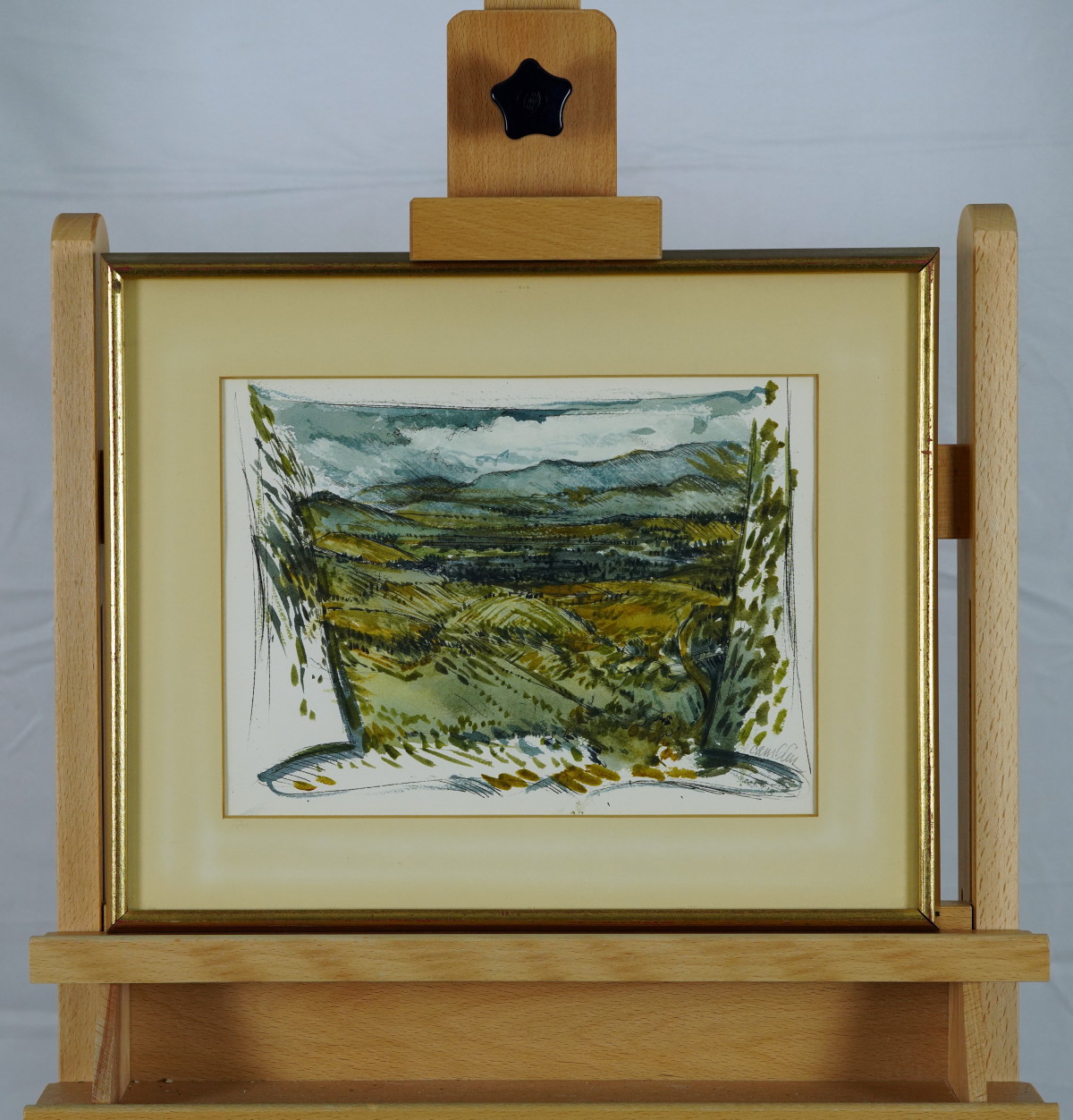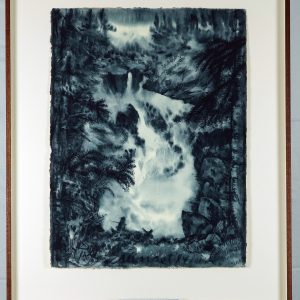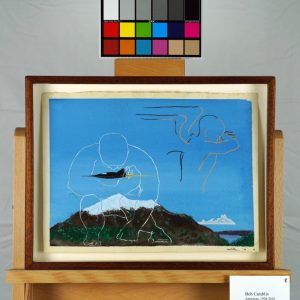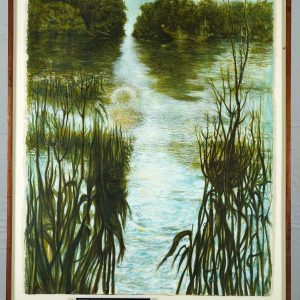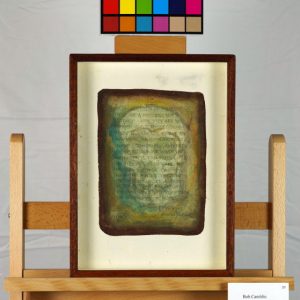Description
bc-308, 1978
Watercolor
Signed
8 x 11 in. (image)
13 x 16 in. (frame)
original, includes certificate of authenticity from ArtTrust
The watercolor “BC308” shows a landscape scene with lush hills stretching into the distance, rendered in an impressionistic style with loose, expressive brushstrokes. The colors consist mainly of earthy tones—greens, browns, and subtle hints of yellow—suggesting a natural environment full of life. The piece is framed with soft lines that appear to wrap around the image, creating a sense of contained space, almost as if the scene is seen through a window or a picture frame.
In Zen, nature often symbolizes the mind itself—expansive and unbounded. The undulating hills evoke the ebb and flow of thoughts that rise and fall in meditation. The loose brushwork represents the artist’s effort to capture the moment without clinging to form or precision. There’s an implicit acceptance of the transient nature of reality, as suggested by the flowing lines and the harmony between land and sky. Zen emphasizes direct experience, which is mirrored here in the artwork’s immediacy and rawness, suggesting the artist’s presence in the moment.
The scene may resonate with Hexagram 20, “Contemplation.” This hexagram symbolizes observing the world and understanding the patterns within it. The viewer is invited to see beyond the mere shapes and colors of the hills to perceive the rhythms of nature and life. The broad, rolling landscape encourages the viewer to consider perspective—both physical and spiritual—as a tool for introspection. The act of framing the landscape may symbolize the desire to grasp or understand what is ultimately beyond capture.
The artwork blends elements of Zen and the I Ching by focusing on a natural landscape as a metaphor for the mind and experience. It prompts the viewer to look beyond the surface and perceive the invisible forces shaping the visible world. By creating a frame around the landscape, the artist may be suggesting the limitations of perception while also inviting us to break free from them, encouraging deeper contemplation and mindfulness.
The piece bears resemblance to early 20th-century landscape paintings where artists sought to capture the essence rather than the realistic details of nature. The style could be likened to that of the Impressionists, who focused on light and atmosphere to convey mood. However, the minimalistic approach to line and form also aligns with elements of East Asian landscape art, which often seeks to express the spirit of the scene rather than replicate it exactly. This hybrid style shows how different art movements and cultural perspectives can merge to create something distinct.
*Shipping cost will vary, please inquire at sales@camblingallery.com before purchasing.
Currently ships from Oregon, USA
Member of artnet? Apply for a discount! Inquire about intergallery and permanent loans for museums..
Reproductions of this drawing are available in multiple sizes!
Click here to use our high-resolution viewer!
This artwork is available with a non-fungible token to ensure traceability and transparency of provenance.
The royalty factor – Unlike traditional artworks, such as paintings, mosaics, statues, and the like, NFTs can be programmed to provide royalties to you every time the painting (and token) is sold and resold – for eternity. That mind-bending Camblin you sold could be worth millions one day and provide income for your great-great-great grandkids!
Anti-forgery – The central idea underpinning NFTs is that they are built on the blockchain, which is meant to offer advanced security. Think of it like an un-erasable and un-avoidable copyright.
Easy authentication – Another compelling aspect of NFT art and NFTs in general is the ability to quickly and easily authenticate items, as the record of ownership is scrupulously kept on the blockchain.
